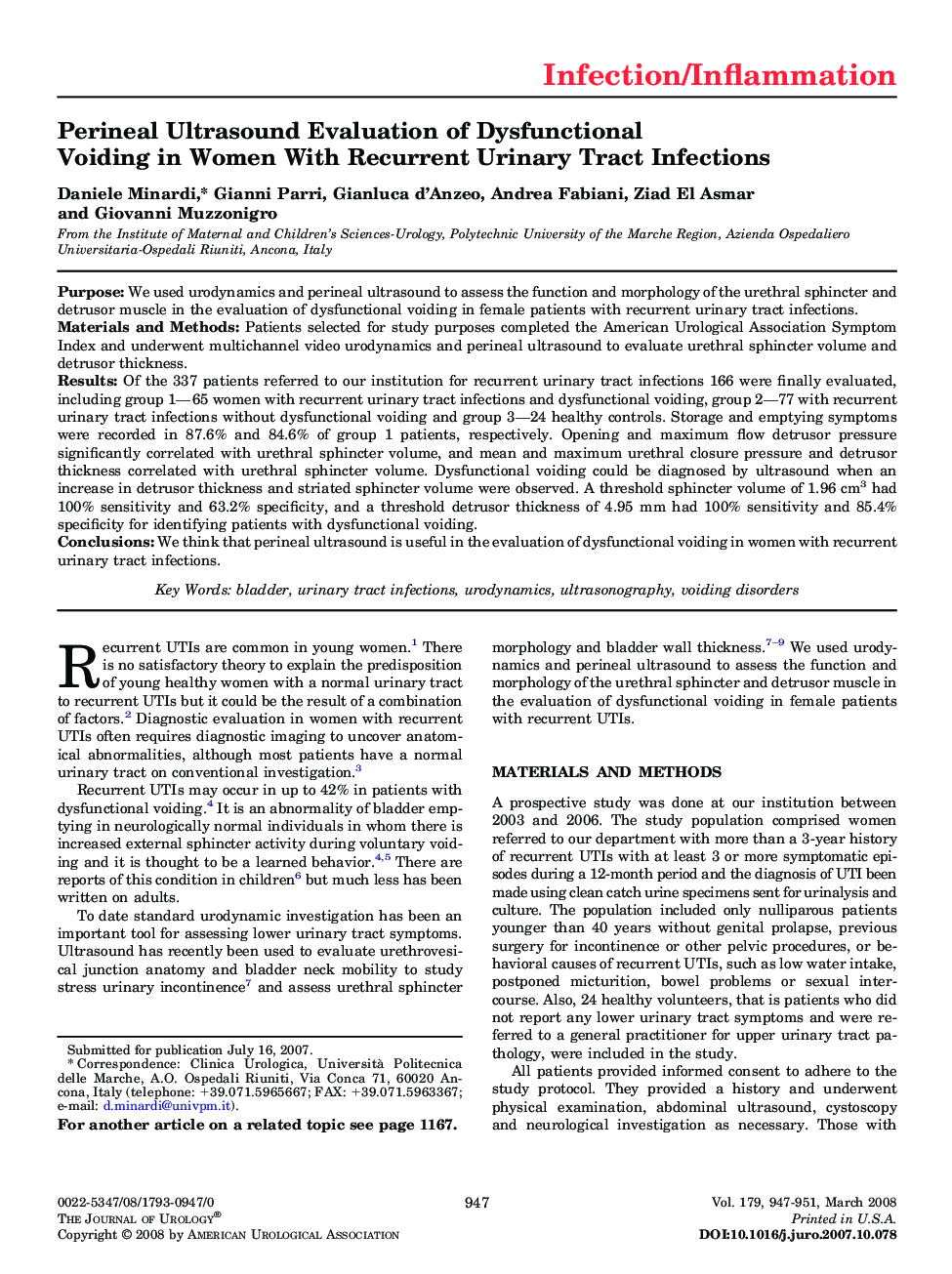| Article ID | Journal | Published Year | Pages | File Type |
|---|---|---|---|---|
| 3873564 | The Journal of Urology | 2008 | 5 Pages |
PurposeWe used urodynamics and perineal ultrasound to assess the function and morphology of the urethral sphincter and detrusor muscle in the evaluation of dysfunctional voiding in female patients with recurrent urinary tract infections.Materials and MethodsPatients selected for study purposes completed the American Urological Association Symptom Index and underwent multichannel video urodynamics and perineal ultrasound to evaluate urethral sphincter volume and detrusor thickness.ResultsOf the 337 patients referred to our institution for recurrent urinary tract infections 166 were finally evaluated, including group 1—65 women with recurrent urinary tract infections and dysfunctional voiding, group 2—77 with recurrent urinary tract infections without dysfunctional voiding and group 3—24 healthy controls. Storage and emptying symptoms were recorded in 87.6% and 84.6% of group 1 patients, respectively. Opening and maximum flow detrusor pressure significantly correlated with urethral sphincter volume, and mean and maximum urethral closure pressure and detrusor thickness correlated with urethral sphincter volume. Dysfunctional voiding could be diagnosed by ultrasound when an increase in detrusor thickness and striated sphincter volume were observed. A threshold sphincter volume of 1.96 cm3 had 100% sensitivity and 63.2% specificity, and a threshold detrusor thickness of 4.95 mm had 100% sensitivity and 85.4% specificity for identifying patients with dysfunctional voiding.ConclusionsWe think that perineal ultrasound is useful in the evaluation of dysfunctional voiding in women with recurrent urinary tract infections.
